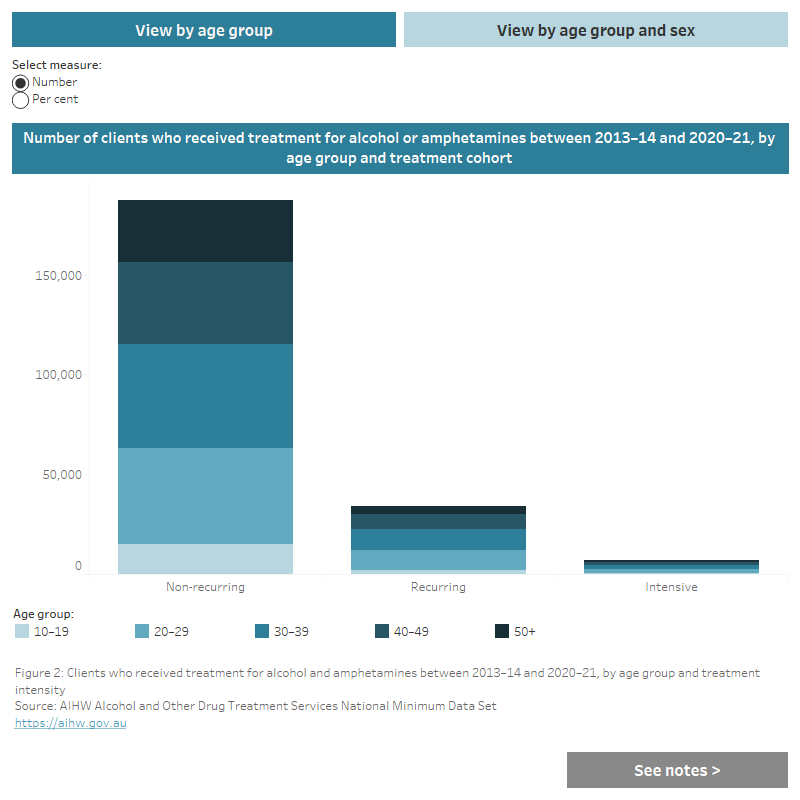Who received intensive, recurring and non-recurring AOD treatment?
Clients accessing alcohol and other drug treatment services often receive multiple episodes of treatment, with some clients requiring more intensive treatment (more treatment episodes spanning multiple years) to achieve their treatment goals. This section of the report examines how clients’ contact with services over multiple episodes and years relates to the likelihood of planned or unplanned treatment episode completion.
To examine treatment intensity, three cohorts were defined based on both the number of treatment episodes that clients had received and the number of years in which they received treatment between 1 July 2013 to 30 June 2021. Those clients interacting with AOD services the least were captured in the non-recurring treatment cohort while those interacting the most were captured in the intensive treatment cohort.
For further information, see How is AOD treatment intensity defined and Technical notes.
Client age and sex
Across clients receiving AOD treatment between 2013–14 and 2020–21, the majority of clients were male. Age and sex characteristics were similar across all three treatment cohorts, as shown in Figure 2:
- intensive treatment: almost 3 in 5 (56%) clients were male and over 2 in 5 (44%) were female, making intensive treatment the cohort with the highest proportion of females. The median age at which clients entered treatment for the first time between 2013–14 and 2019–20* was 35 years
- recurring treatment: around 2 in 3 (65%) clients were male and the median age at which clients entered treatment for the first time between 2013–14 and 2019–20 was 34 years
- non-recurring treatment: over 2 in 3 (68%) clients were male and the median age at which clients entered treatment for the first time between 2013–14 and 2019–20 was 35 years.
The likelihood of treatment ending as a planned completion was higher among episodes provided to older clients across all cohorts. For further detail, refer to Supplementary Tables BLTN.3 and BLTN.4.
*Note that clients were excluded from analysis if they received their first treatment episode after the 2019–20 collection period. This ensures that there was enough time for clients to have received treatment in 3 or more collection periods and thus meet the criteria for identifying intensive treatment. Please refer to How is AOD treatment intensity defined? for further information.
Figure 2: Clients who received treatment for alcohol and amphetamines between 2013–14 and 2020–21, by age group and treatment intensity
This interactive data visualisation shows the number and proportion of clients receiving intensive, recurring and non-recurring treatment for alcohol or amphetamines by age and sex.



